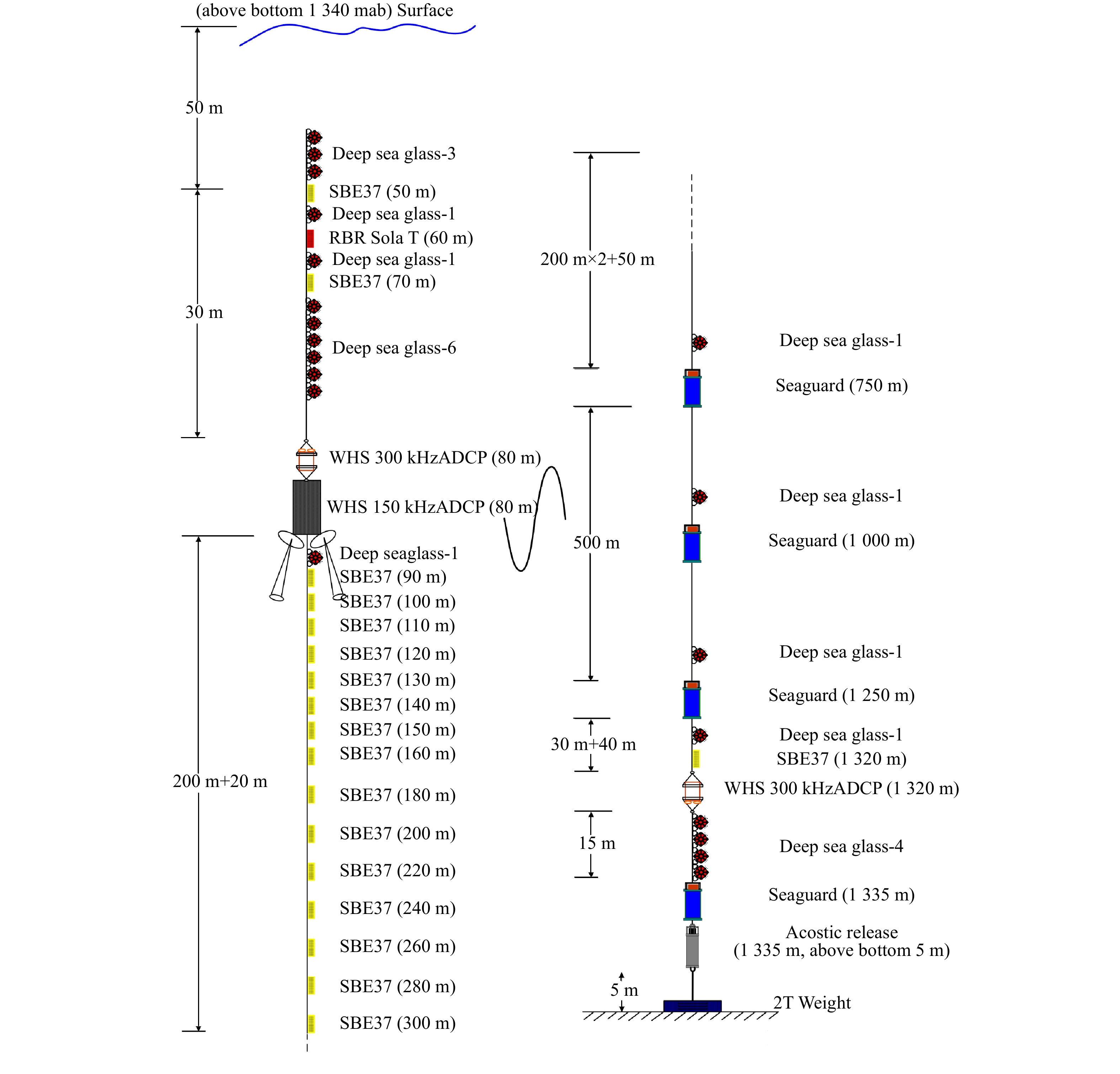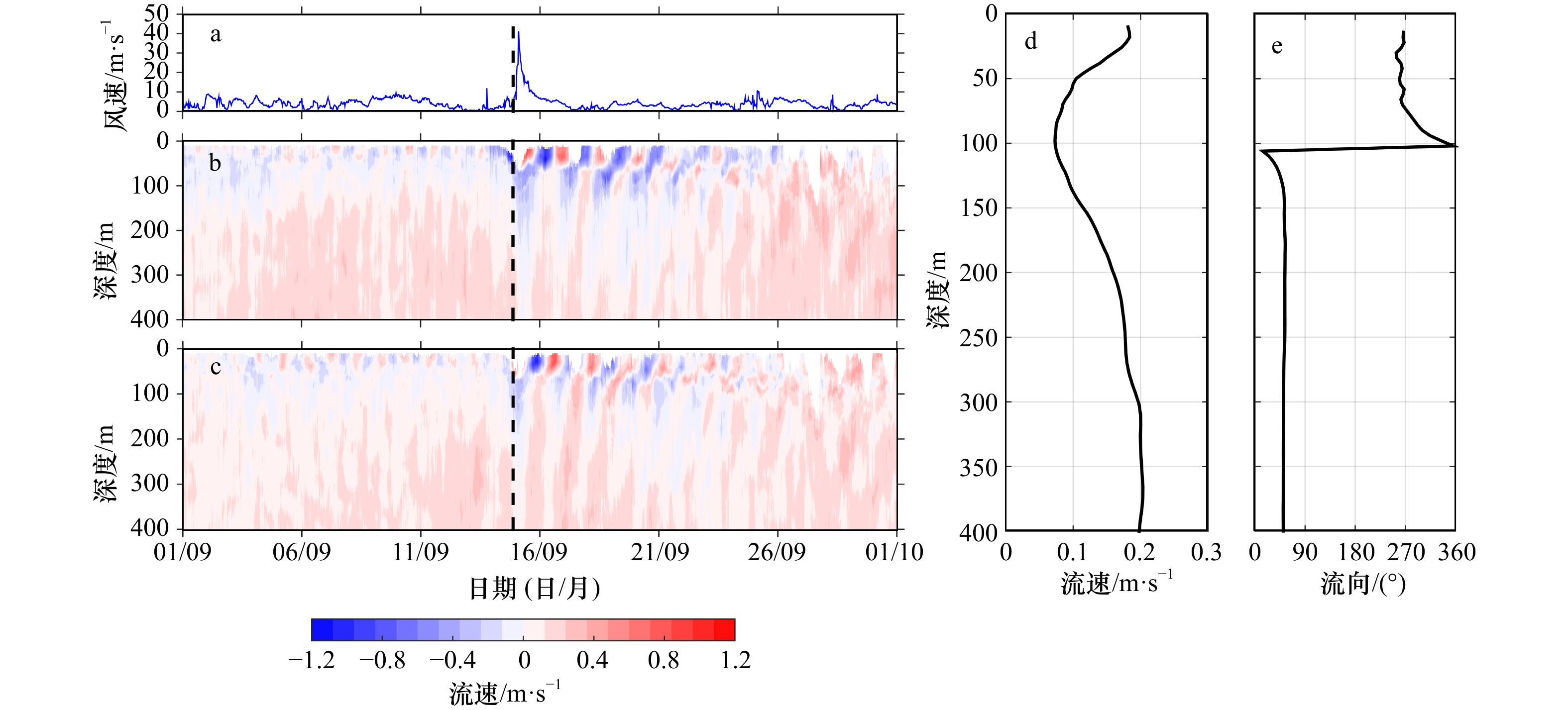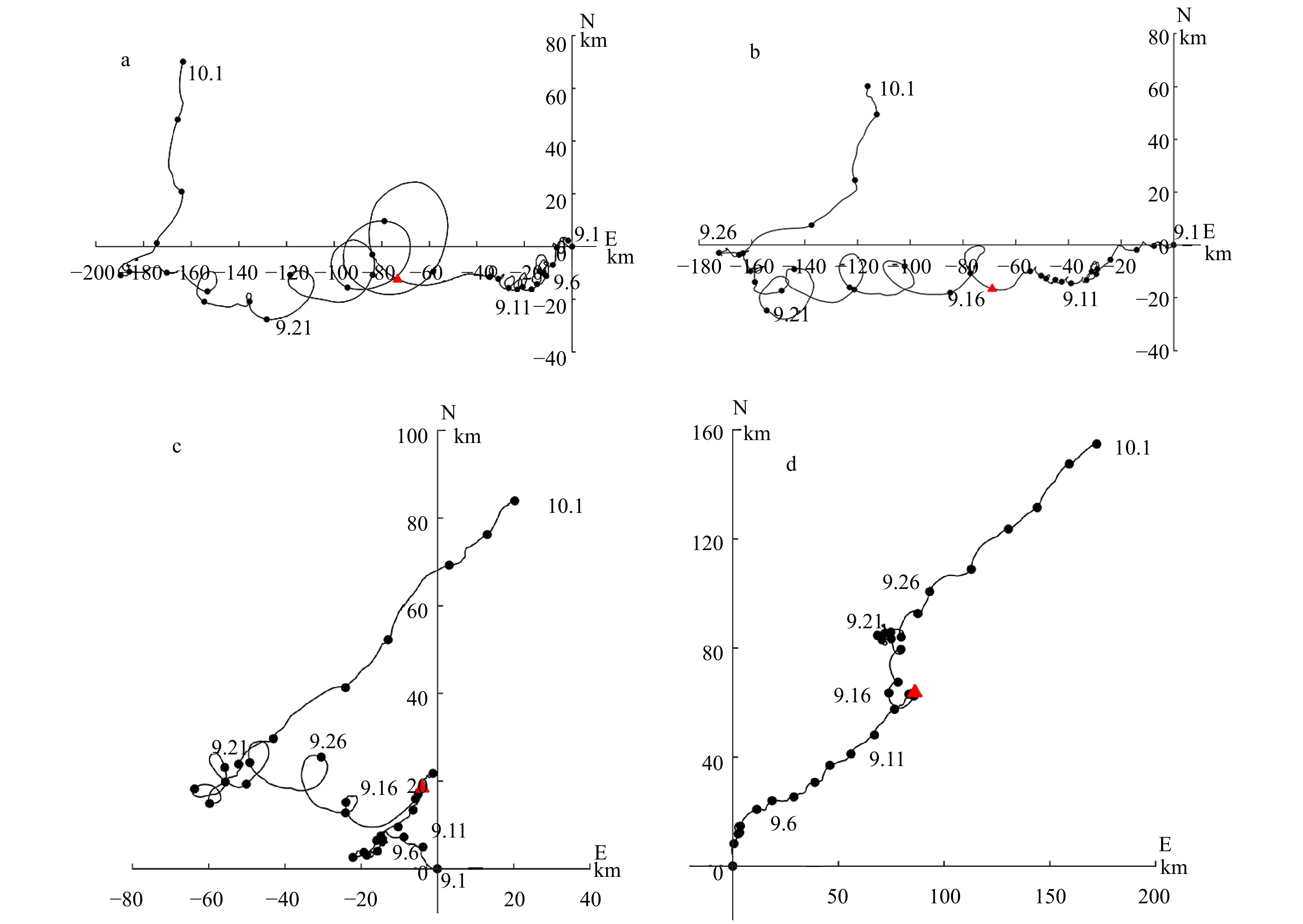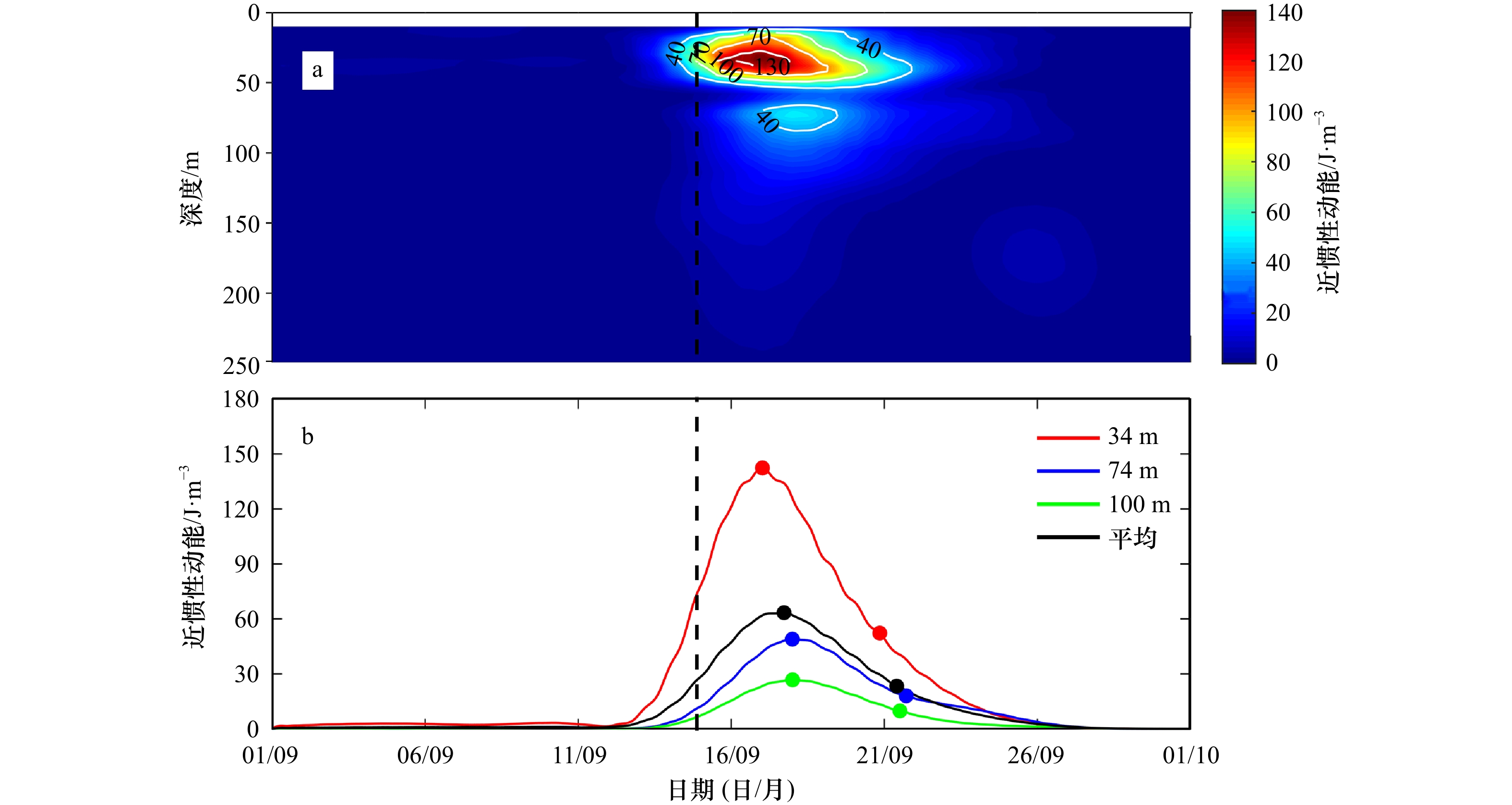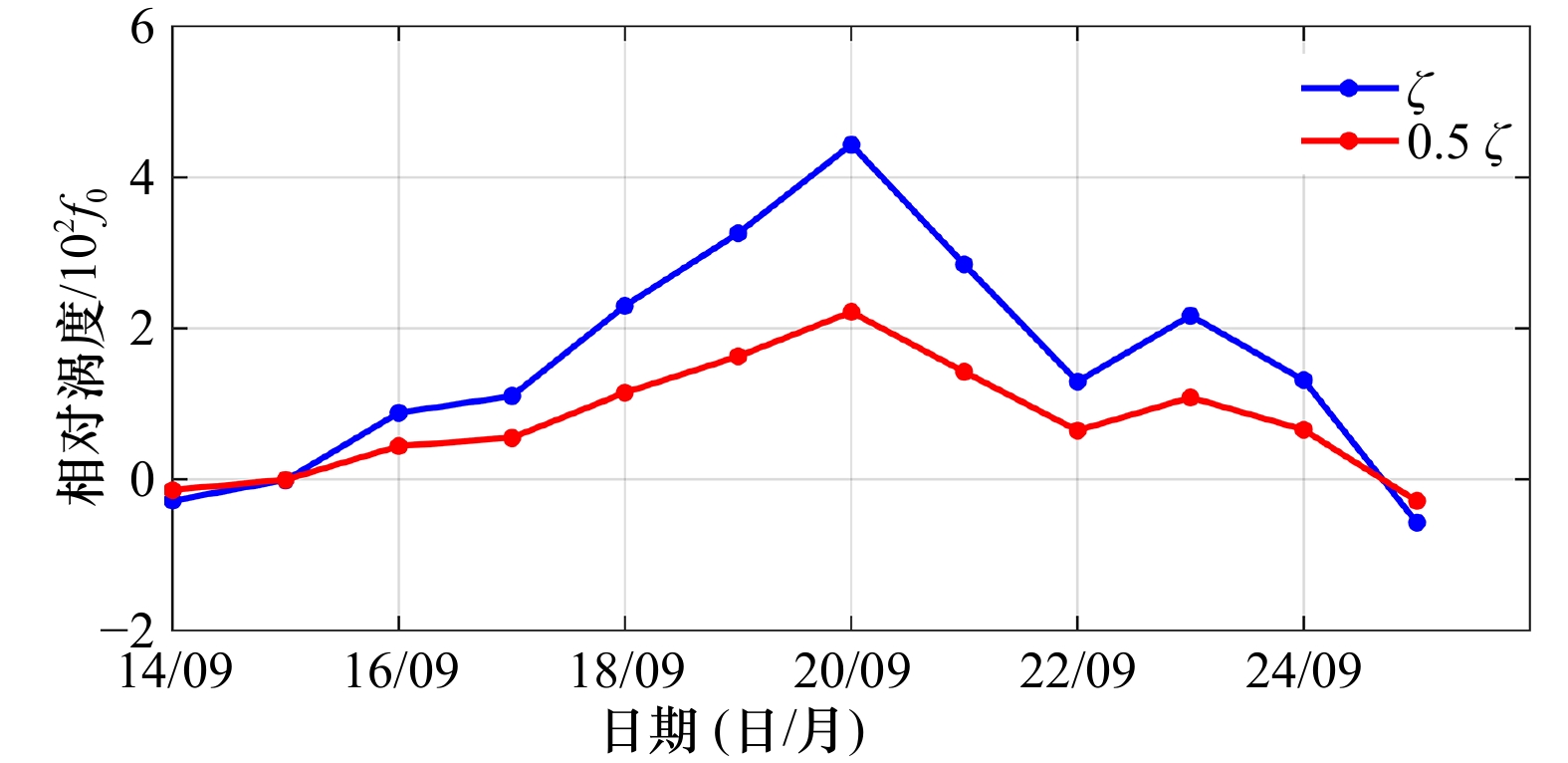Analysis of upper ocean response to Typhoon Doksuri in the northwest South China Sea
-
摘要: 基于锚碇观测资料,本文分析了南海西北部陆坡区上层海洋对台风“杜苏芮”的动力学和热力学响应特征。在动力学响应方面,台风“杜苏芮”期间上层流速显著增强,混合层纬向流速可达1.20 m/s;“杜苏芮”经过后上层海水运动以近惯性振荡为主(流向顺时针旋转周期在36~40 h之间)。近惯性能量在垂向分布上存在两个高值中心,分别位于混合层和温跃层深度上。近惯性能量耗散过程的e折时间尺度约为3.7 d,我们认为能量的向下传播在局地近惯性能量衰减过程中起主要作用。对能量谱的分析表明,“杜苏芮”作用期间近惯性频率能量相对于其作用前增大了约29.4倍,而全日和半日频率(K1和M2)能量有所减弱。此外,能量谱显示近惯性频率存在明显的“蓝移”现象,即对于纬向和经向流速分量在400 m以浅平均的近惯性振荡频率分别为1.167 f0和1.170 f0(f0为局地惯性频率)。蓝移与近惯性内波的向下传播及正的相对涡度的输入有关。在热力学响应方面,上层海洋在台风的搅拌作用下,40~250 m深度均出现较小增温,最大增温幅度接近1°C;此外70 m以浅盐度的降低可能与台风过境时的降水相关,而Ekman抽吸引起的上升流则可能对70~100 m深度盐度的升高具有重要作用。Abstract: Based on the in-situ data from mooring deployed in the northwest South China Sea, we investigate the dynamical and thermal dynamical response of upper ocean to Typhoon Doksuri. In the aspect of dynamic response, as the Typhoon passing, the currents in upper layer enhanced strikingly, the zonal currents in the mixed layer reaches 1.20 m/s. After the passage of Typhoon Doksuri, the currents in the upper layer are dominated by near-inertial oscillation, which rotate clockwise with a period between 36–40 hours. The kinetic energy of near-inertial wave shows two high energetic cores in vertical, which locates at the mixed layer and the thermocline layer, respectively. The estimated e-folding time-scale of near-inertial energy decay is about 3.7 d, and we believe that the downward propagation of energy is the major reason for the decay. The power spectra analysis of currents reveals that power density at inertial frequency, during the period of Typhoon Doksuri, increases about 29.4 times larger than that before the Typhoon arriving. Nevertheless, power density both at diurnal (K1) and semidiurnal (M2) frequency decreases during Typhoon period. Additionally, a blue shift at inertial frequency is identified. We find that the averaged near-internal frequency in upper 400 m is 1.167 f0 for zonal near-inertial currents and 1.170 f0 for meridional near-inertial currents (where f0 is the local inertial frequency). This blue shift is connected with the downward propagation of near-inertial waves and input of positive relative vorticity. In the aspect of thermodynamic response, the temperature rises in the upper layer between 40–250 m depth, due to the stirring induced by strong wind, and the maximum increased temperature amplitude is about 1℃. In addition, the decrease of salinity above 70 m may be related to the precipitation caused by the Typhoon. While the upwelling induced by Ekman pumping may have significant contribution to the increase of salinity at the depth of 70–100 m.
-
图 3 台风“杜苏芮”经过前后崖城平台风速时间序列(a),锚系站位纬向流速(b)和经向流速(c)的时间序列;台风前背景场平均流速(d)及流向剖面(e)
黑色虚线表示台风中心距离锚系站位最近的时刻
Fig. 3 Time series of wind speed in Yacheng offshore platform (a), zonal (b) and meridional (c) currents in mooring station before and after Typhoon Doksuri passing. The profiles of mean speed (d) and directions (e) of background currents
The dotted black line denotes the moment when the typhoon center is closest to the mooring station
图 4 台风“杜苏芮”作用前后观测站位流速的前进矢量图
a. 30 m; b. 50 m; c. 100 m; d. 150 m. 红色三角形代表台风中心距离站位最近的时刻
Fig. 4 The progressive vector of currents in observation station before and after Typhoon Doksuri passing
a. 30 m; b. 50 m; c. 100 m; d. 150 m. The red triangle represents the moment when the typhoon center is closest to the mooring station
图 6 局地惯性周期平均的近惯性动能分布(a)及不同深度上的时间序列(b)
b图中每条曲线上的两个实心圆点分别代表能量最大值的位置和能量衰减至最大能量的1/e的位置
Fig. 6 Variation near-inertial kinetic energy profile with time (a), and time series of near-inertial kinetic energy at different depths (b)
The two dots on each line in b indicate the position of the maximum energy and the position where the energy decays to 1/e of the maximum energy, respectively
图 7 “杜苏芮”作用之前(a)和之后(b)纬向流速的功率谱;杜苏芮作用之前(c)和之后(d)纬向流速在50 m、100 m和150 m深度上的能谱曲线
图a的两条品红虚线为近惯性频带宽度
Fig. 7 Power spectra of the zonal currents before (a) and after (b) Typhoon Doksuri passing. Power spectra of the zonal currents before (c) and after (d) Typhoon Doksuri passing at 50 m, 100 m and 150 m depth
Two magenta dotted lines in a denoting the bandwidth of the near-inertial frequency
表 1 不同频率上能量谱密度(单位:(m2/s2)/cpd)深度积分结果
Tab. 1 Power spectral density (unit: (m2/s2)/cpd) integrated along depth at different frequencies
f K1 M2 PSDR(f:K1:M2) 台风作用前 0.68 5.84 0.26 10:86:4 台风作用后 19.97 2.04 0.24 90:9:1 -
[1] Rossby C G. On the mutual adjustment of pressure and velocity distributions in certain simple current systems[J]. Journal of Marine Research, 1938, 1(1): 15−28. [2] Gill A E. On the behavior of internal waves in the wakes of storms[J]. Journal of Physical Oceanography, 1984, 14(7): 1129−1151. doi: 10.1175/1520-0485(1984)014<1129:OTBOIW>2.0.CO;2 [3] Webster F. Observations of inertial-period motions in the deep sea[J]. Reviews of Geophysics, 1968, 6(4): 473−490. doi: 10.1029/RG006i004p00473 [4] Pollard R T. On the generation by winds of inertial waves in the ocean[J]. Deep Sea Research and Oceanographic Abstracts, 1970, 17(4): 795−812. doi: 10.1016/0011-7471(70)90042-2 [5] Price J F. Upper ocean response to a hurricane[J]. Journal of Physical Oceanography, 1981, 11(2): 153−175. doi: 10.1175/1520-0485(1981)011<0153:UORTAH>2.0.CO;2 [6] Price J F. Internal wave wake of a moving storm. Part I. Scales, energy budget and observations[J]. Journal of Physical Oceanography, 1983, 13(6): 949−965. doi: 10.1175/1520-0485(1983)013<0949:IWWOAM>2.0.CO;2 [7] Sanford T B, Price J F, Girton J B, et al. Highly resolved observations and simulations of the ocean response to a hurricane[J]. Geophysical Research Letters, 2007, 34(13): L13604. [8] Sanford T B, Price J F, Girton J B. Upper-ocean response to hurricane Frances (2004) observed by profiling EM-APEX floats[J]. Journal of Physical Oceanography, 2011, 41(6): 1041−1056. doi: 10.1175/2010JPO4313.1 [9] Teague W J, Jarosz E, Wang D W, et al. Observed oceanic response over the upper continental slope and outer shelf during hurricane Ivan[J]. Journal of Physical Oceanography, 2007, 37(9): 2181−2206. doi: 10.1175/JPO3115.1 [10] Zedler S E, Dickey T D, Doney S C, et al. Analyses and simulations of the upper ocean's response to Hurricane Felix at the Bermuda Testbed Mooring site: 13-23 August 1995[J]. Journal of Geophysical Research: Oceans, 2002, 107(25): 3232. [11] Qi H B, De Szoeke R A, Paulson C A, et al. The structure of near-inertial waves during ocean storms[J]. Journal of Physical Oceanography, 1995, 25(11): 2853−2871. doi: 10.1175/1520-0485(1995)025<2853:TSONIW>2.0.CO;2 [12] Shay L K, Elsberry R T. Near-inertial ocean current response to Hurricane Frederic[J]. Journal of Physical Oceanography, 1987, 17(8): 1249−1269. doi: 10.1175/1520-0485(1987)017<1249:NIOCRT>2.0.CO;2 [13] Shay L K, Chang S W, Elsberry R T. Free surface effects on the near-inertial ocean current response to a hurricane[J]. Journal of Physical Oceanography, 1990, 20(9): 1405−1424. doi: 10.1175/1520-0485(1990)020<1405:FSEOTN>2.0.CO;2 [14] Sun L, Zheng Q A, Tang T Y, et al. Upper ocean near-inertial response to 1998 Typhoon Faith in the South China Sea[J]. Acta Oceanologica Sinica, 2012, 31(2): 25−32. doi: 10.1007/s13131-012-0189-9 [15] Sun Lu, Zheng Quanan, Wang Dongxiao, et al. A case study of near-inertial oscillation in the South China Sea using mooring observations and satellite altimeter data[J]. Journal of Oceanography, 2011, 67(6): 677−687. doi: 10.1007/s10872-011-0081-9 [16] Yang Bing, Hou Yijun. Near-inertial waves in the wake of 2011 Typhoon Nesat in the northern South China Sea[J]. Acta Oceanologica Sinica, 2014, 33(11): 102−111. doi: 10.1007/s13131-014-0559-6 [17] Lin Feilong, Liang Chujin, Hou Yijun, et al. Observation of interactions between internal tides and near-inertial waves after typhoon passage in the northern South China Sea[J]. Chinese Journal of Oceanology and Limnology, 2015, 33(5): 1279−1285. doi: 10.1007/s00343-015-4253-0 [18] Yang Bing, Hou Yijun, Hu Po, et al. Shallow ocean response to tropical cyclones observed on the continental shelf of the northwestern South China Sea[J]. Journal of Geophysical Research: Oceans, 2015, 120(5): 3817−3836. doi: 10.1002/2015JC010783 [19] Liu Junliang, Cai Shuqun, Wang Dongxiao, et al. A case study of the near-inertial oscillations near the Xisha Islands in the South China Sea during the passage of typhoon Conson 2010[J]. Aquatic Ecosystem Health & Management, 2015, 18(4): 367−377. [20] Zhai Xiaoming, Greatbatch R J, Eden C. Spreading of near-inertial energy in a 1/12° model of the North Atlantic Ocean[J]. Geophysical Research Letters, 2007, 341(10): L10609. [21] Kunze E, Schmitt R W, Toole J M. The energy balance in a warm-core ring’s near-inertial critical layer[J]. Journal of Physical Oceanography, 1995, 25(5): 942−957. doi: 10.1175/1520-0485(1995)025<0942:TEBIAW>2.0.CO;2 [22] Kunze E. Near-inertial wave propagation in geostrophic shear[J]. Journal of Physical Oceanography, 1985, 15(5): 544−565. doi: 10.1175/1520-0485(1985)015<0544:NIWPIG>2.0.CO;2 [23] Emanuel K A. Thermodynamic control of hurricane intensity[J]. Nature, 1999, 401(6754): 665−669. doi: 10.1038/44326 [24] Zhang Han, Chen Dake, Zhou Lei, et al. Upper ocean response to typhoon Kalmaegi (2014)[J]. Journal of Geophysical Research: Oceans, 2016, 121(8): 6520−6535. doi: 10.1002/2016JC012064 [25] Chu P C, Veneziano J M, Fan C W, et al. Response of the South China Sea to tropical cyclone Ernie[J]. Journal of Geophysical Research: Oceans, 2000, 105(C6): 13991−14009. doi: 10.1029/2000JC900035 [26] Liu J, Cai S, Wang S. Currents and mixing in the northern South China Sea[J]. Chinese Journal of Oceanology and Limnology, 2010, 28: 974−980. doi: 10.1007/s00343-010-9094-2 [27] Liu J, Cai S, Wang S. Observations of strong near-bottom current after the passage of Typhoon Pabuk in the South China Sea[J]. Journal of Marine Systems, 2011, 87(1): 102−108. doi: 10.1016/j.jmarsys.2011.02.023 [28] 高大鲁, 王新怡, 李秉天, 等. 南海北部海域对台风尼格的响应特征分析[J]. 中国海洋大学学报, 2016, 46(6): 8−13, 28.Gao Dalu, Wang Xinyi, Li Bingtian, et al. On the response of the upper ocean of Northern South China Sea to Typhoon Nalgae[J]. Periodical of Ocean University of China, 2016, 46(6): 8−13, 28. [29] Liu Junliang, He Yinghui, Li Juan, et al. Cases study of nonlinear interaction between near-inertial waves induced by typhoon and diurnal tides near the Xisha Islands[J]. Journal of Geophysical Research: Oceans, 2018, 123(4): 2768−2784. doi: 10.1029/2017JC013555 [30] 管守德. 南海北部近惯性振荡研究[D]. 青岛: 中国海洋大学, 2014.Guan Shoude. Near inertial oscillations in the northern South China Sea[D]. Qingdao: Ocean University of China, 2014. [31] 袁耀初, 赵进平, 王惠群, 等. 南海东北部450 m以浅水层与深层海流观测结果及其谱分析[J]. 中国科学: D辑, 2002, 45(11): 1008−1026.Yuan Yaochu, Zhao Jinping, Wang Huiqun, et al. Current measurements and spectral analyses in the upper 450 m and deep layers of the northeastern South China Sea[J]. Science in China Series D: Earth Sciences, 2002, 45(11): 1008−1026. [32] Brooks D A. The wake of hurricane Allen in the western Gulf of Mexico[J]. Journal of Physical Oceanography, 1983, 13(1): 117−129. doi: 10.1175/1520-0485(1983)013<0117:TWOHAI>2.0.CO;2 [33] Zheng Quan’an, Lai R J, Huang N E, et al. Observation of ocean current response to 1998 Hurricane Georges in the Gulf of Mexico[J]. Acta Oceanologica Sinica, 2006, 25(1): 1−14. [34] Sun Zhenyu, Hu Jianyu, Zheng Quanan, et al. Strong near-inertial oscillations in geostrophic shear in the northern South China Sea[J]. Journal of Oceanography, 2011, 67(4): 377−384. doi: 10.1007/s10872-011-0038-z [35] 廖光洪, 袁耀初, Arata K, et al. 吕宋海峡ADCP观测的450 m以浅水层内潮特征分析[J]. 中国科学: 地球科学, 2011, 54(7): 1078−1074.Liao Guanghong, Yuan Yaochu, Arata K, et al. Analysis of internal tidal characteristics in the layer above 450 m from acoustic Doppler current profiler observations in the Luzon Strait[J]. Science China: Earth Sciences, 2011, 54(7): 1078−1074. [36] Zhai Xiaoming, Greatbatch R J, Eden C, et al. On the loss of wind-induced near-inertial energy to turbulent mixing in the upper ocean[J]. Journal of Physical Oceanography, 2009, 39(11): 3040−3045. doi: 10.1175/2009JPO4259.1 [37] Guan Shoude, Zhao Wei, Huthnance J, et al. Observed upper ocean response to typhoon Megi (2010) in the northern South China Sea[J]. Journal of Geophysical Research: Atmospheres, 2014, 119(5): 3134−3157. -




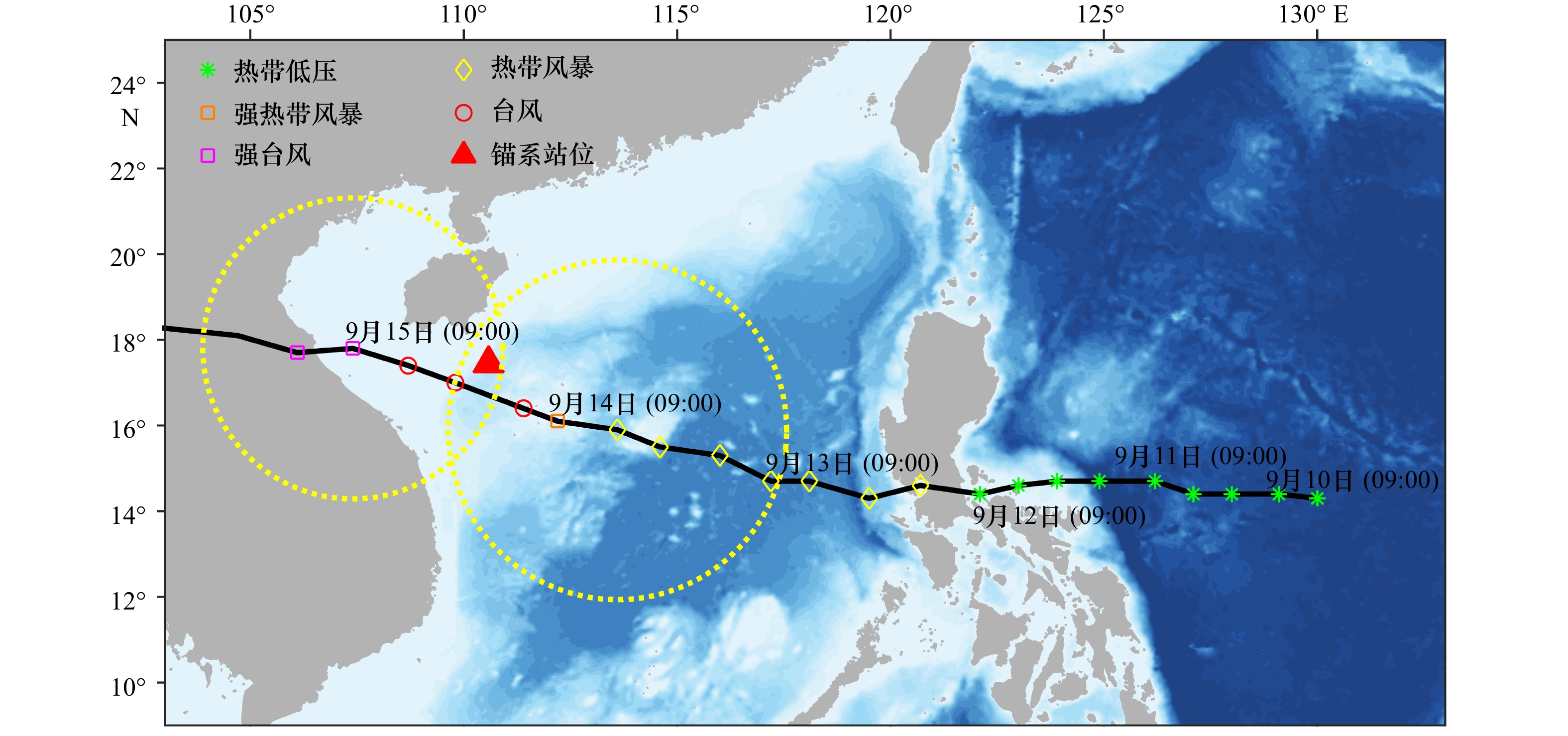
 下载:
下载:
